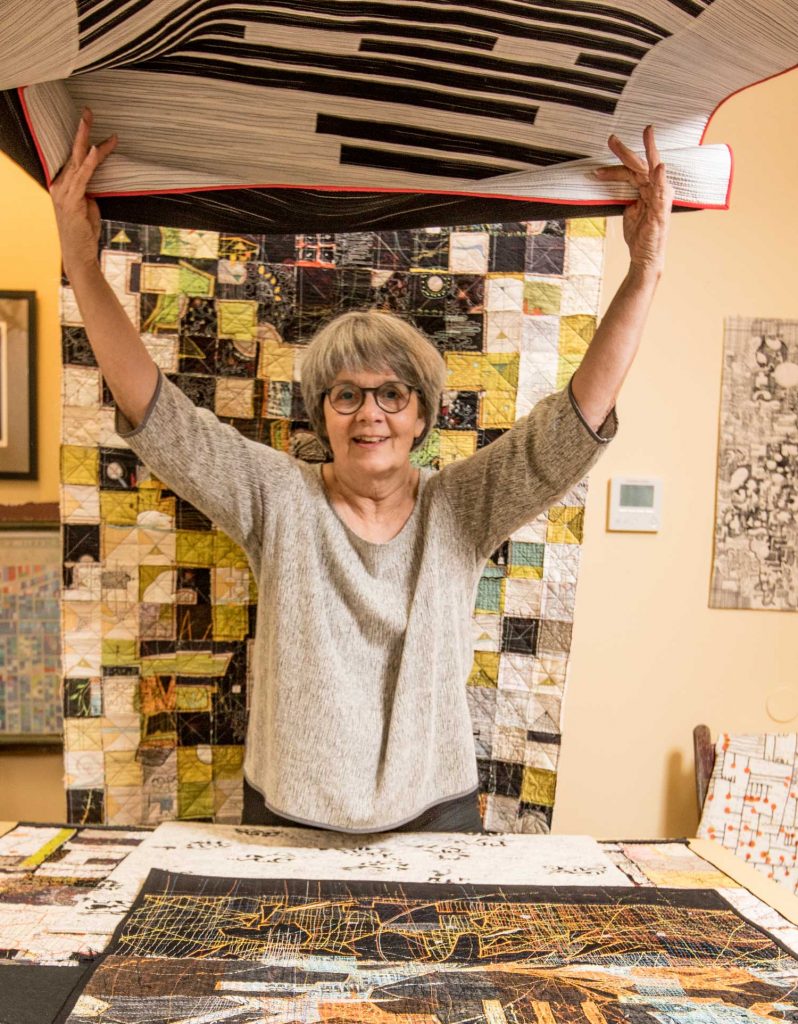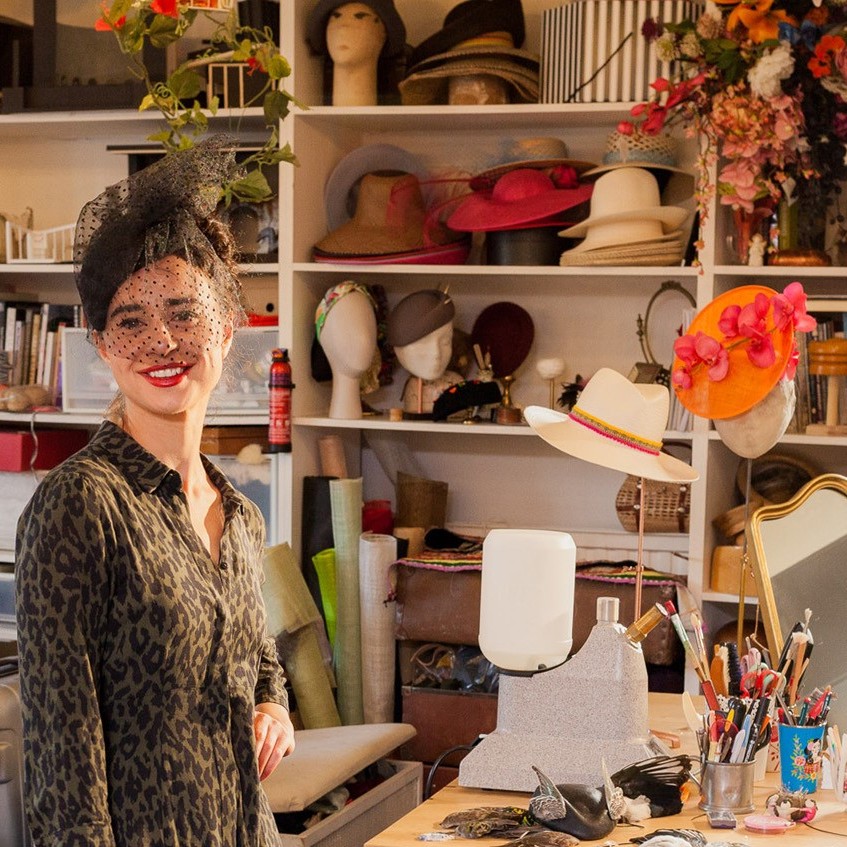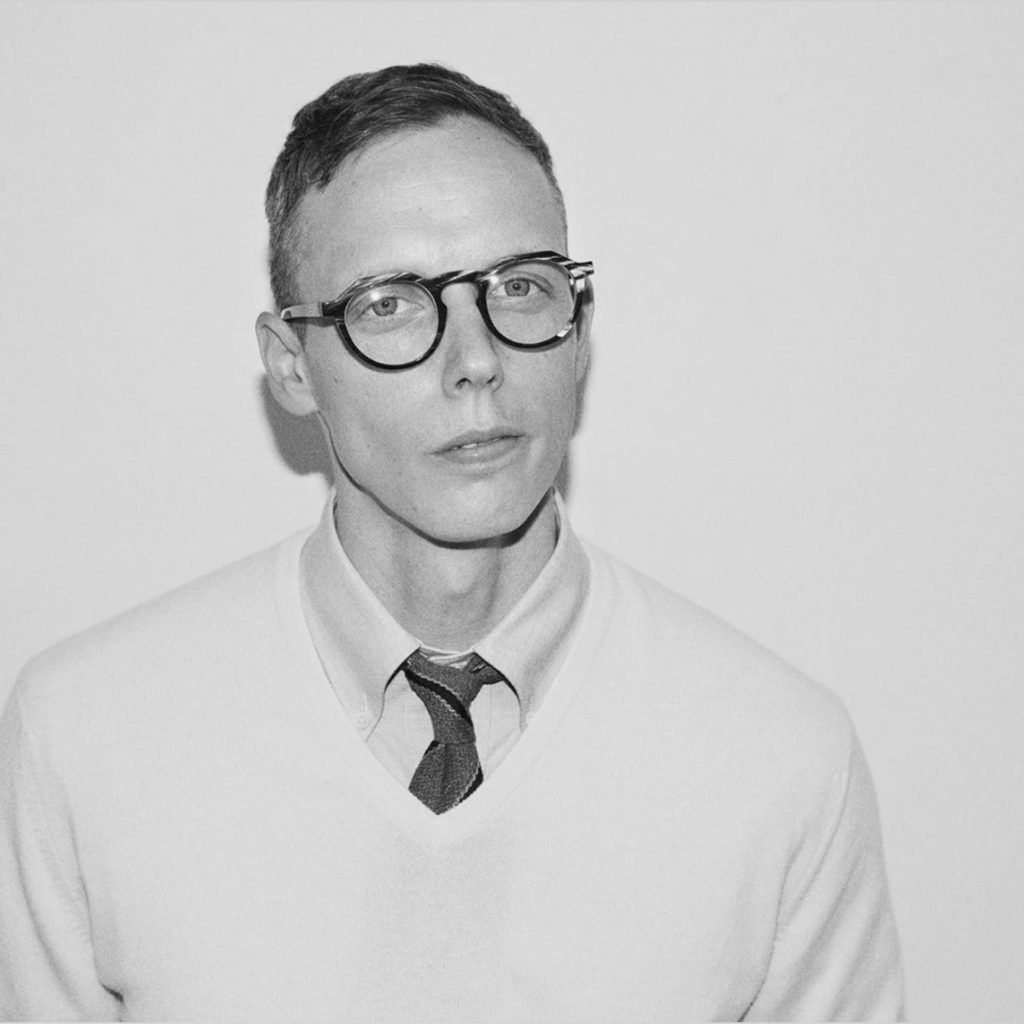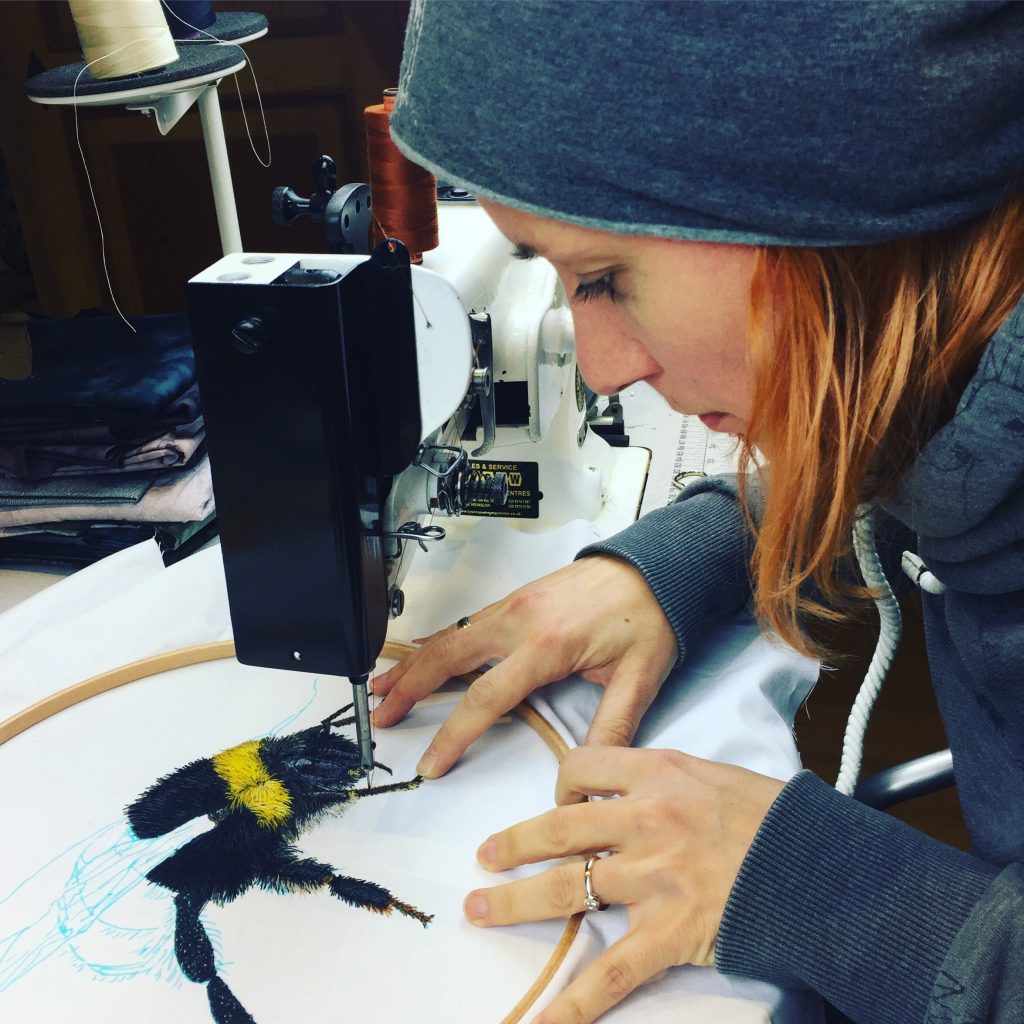Paula Kovarik Textile Artist
Your most resent exhibition is titled, ‘Stitched Dissent’. Discuss the title and why you feel personally, the need to use art in relations to the current political position of your country?
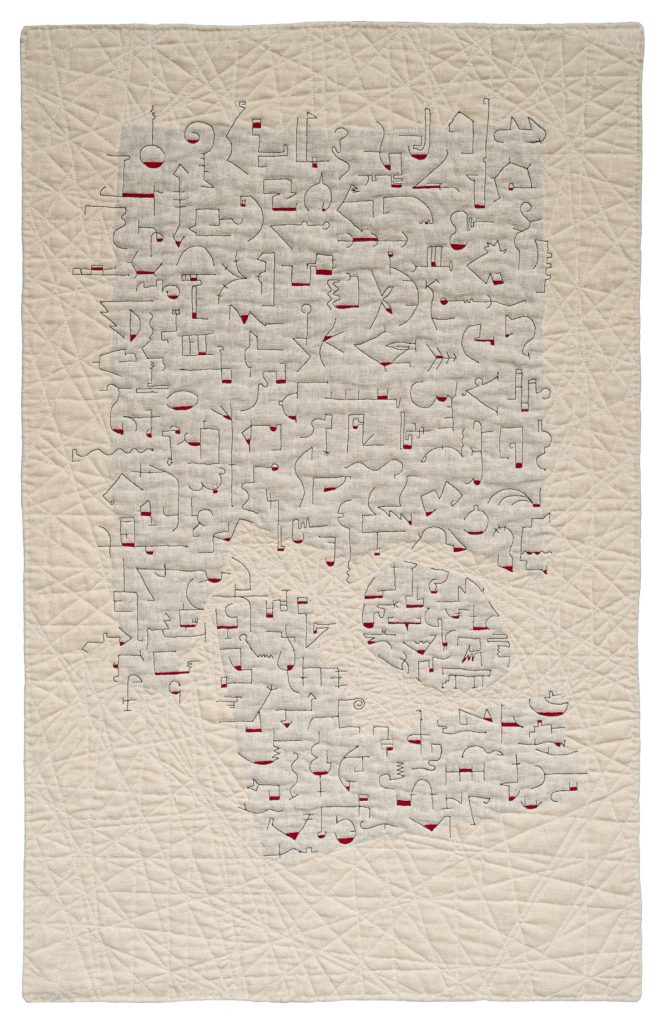
Better Not Said, 41” x 26”, 2019.
The background
Better not Said began with the idea of how we interpret language with ideograms and lettering.
The use of black, white and red.
I use black thread on neutral backgrounds in much of my work. I find that the high contrast of black against white enhances the mark and speaks loudly about the intent of the mark. After adding all the marks to the piece in black I went back into it to add the red thread.
Symbolism
The red thread that fills in spaces within the black marks represents what we hold back in our conversations. The things NOT SAID.
How has your quilting allowed you to travel the globe?
I teach workshops in many places. But more than that my work travels in shows. That is what is so special about this career. My quilts have been shown across the world.
Discuss, line and how you use it in your work.
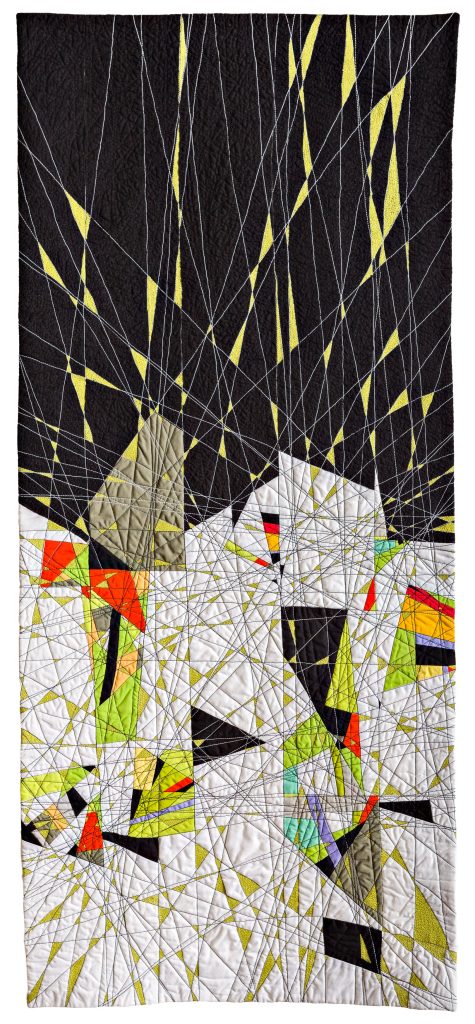
Sightlines, 48 x 19”
Though I do piece fabric and use colour and shape to create compositions my focus has always been on the line created by stitch. It is a language that not only adds texture but also meaning. It controls the density of texture, the direction the eye travels through the piece and the intent of my message.
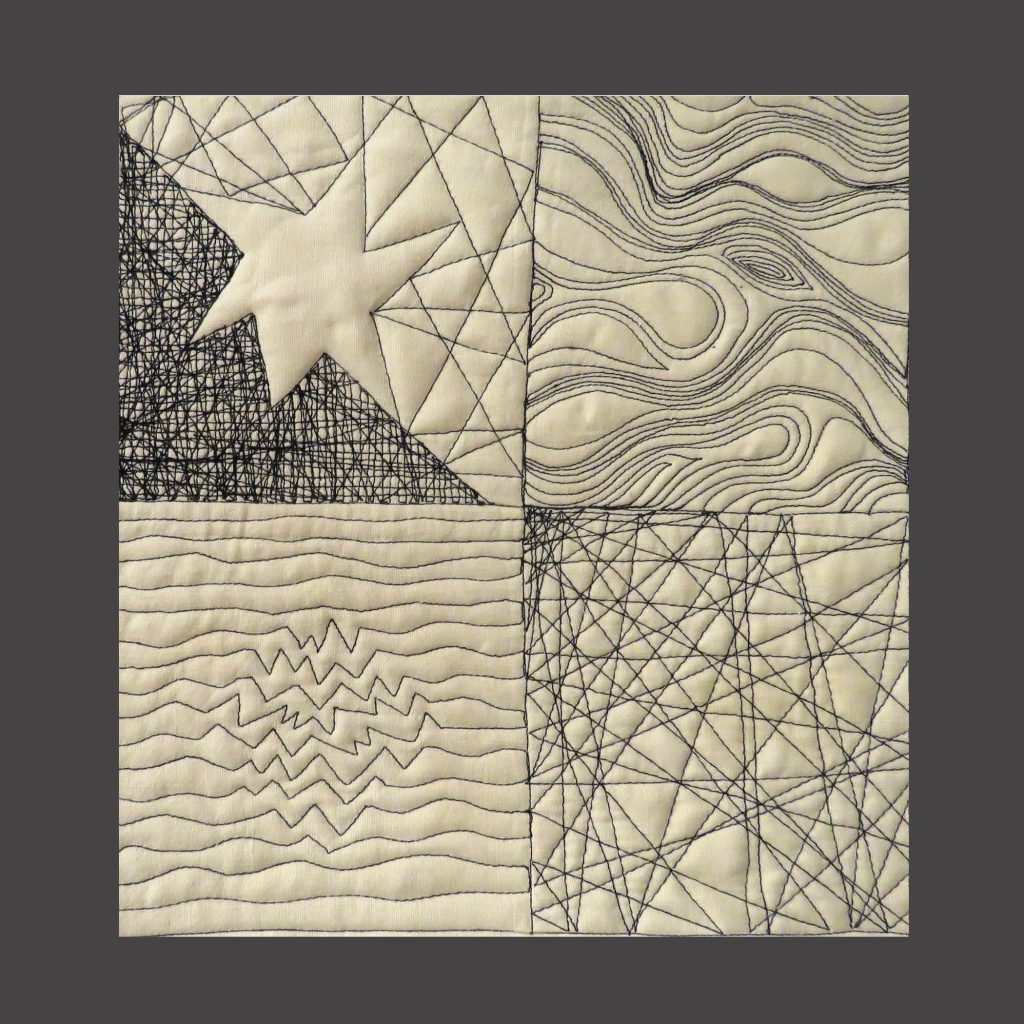 Line Matters, Sample
Line Matters, Sample
How do you want the viewers eye to travel around your quilts?
With wild abandon.
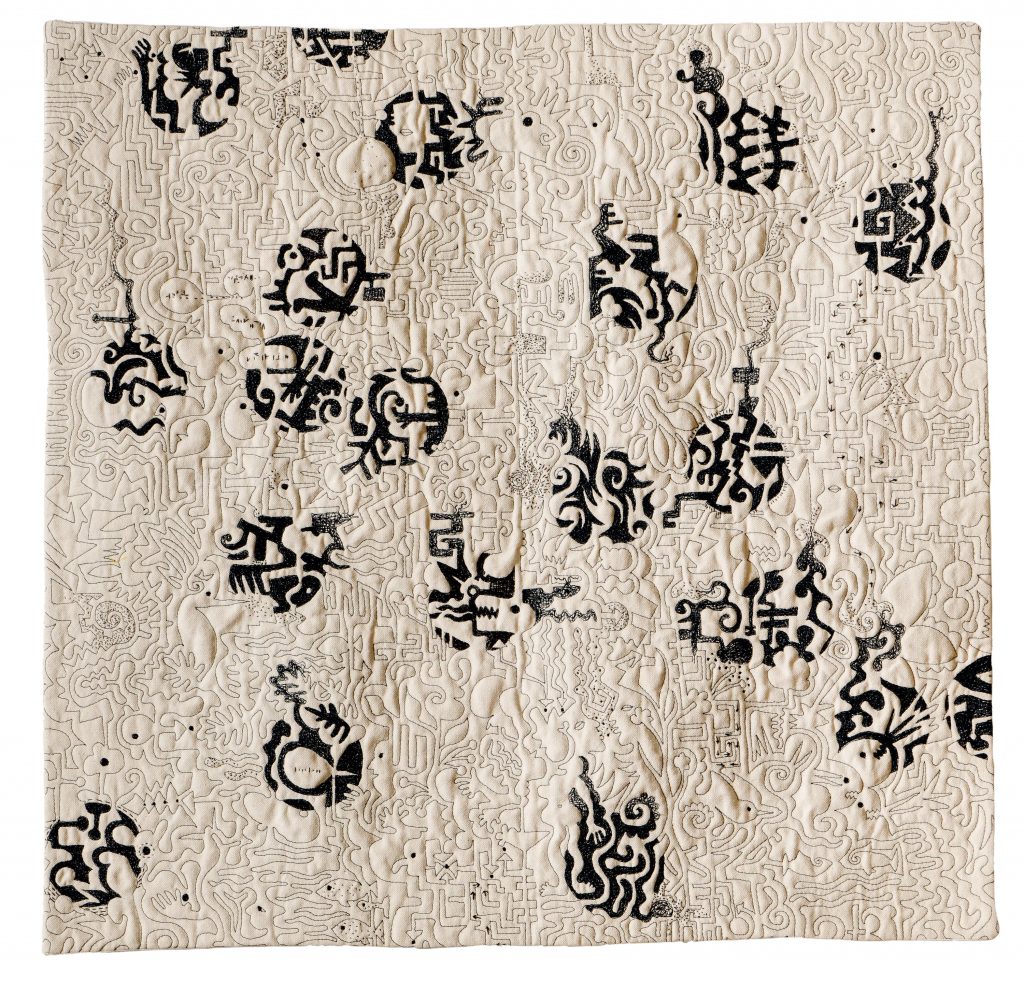
Pathways, 27.5 x 28.25”
Briefly take us through the quilting journey you have taken over your artistic career.
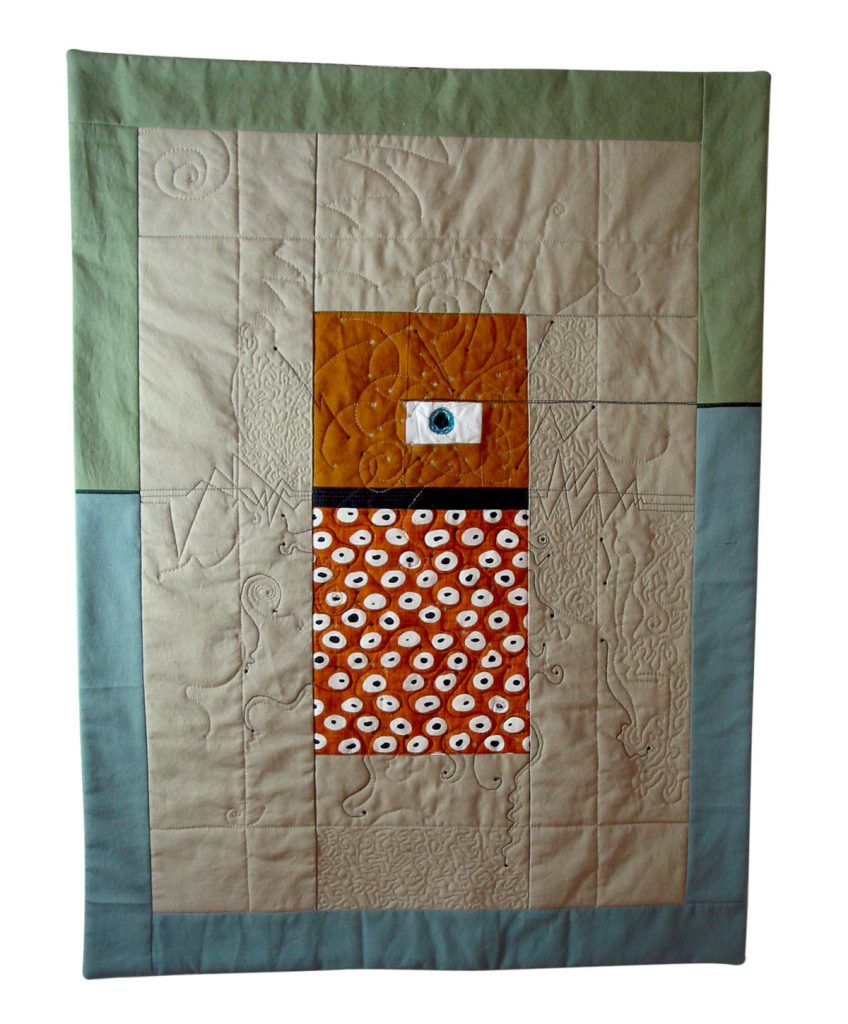 Dissemination, a small piece about crowds and leaders. 12” x 14”, 2006
Dissemination, a small piece about crowds and leaders. 12” x 14”, 2006
I started quilting after my mother introduced me to the craft about 15 years ago. Though I am not a traditional quilter I found that working with fabric and thread was a natural medium for me. I loved the textural quality of it. I am a graphic designer by trade and creating messages through composition and imagery comes naturally to me. I began to apply my design skills to this new medium in order to find my own unique approach to this art form.
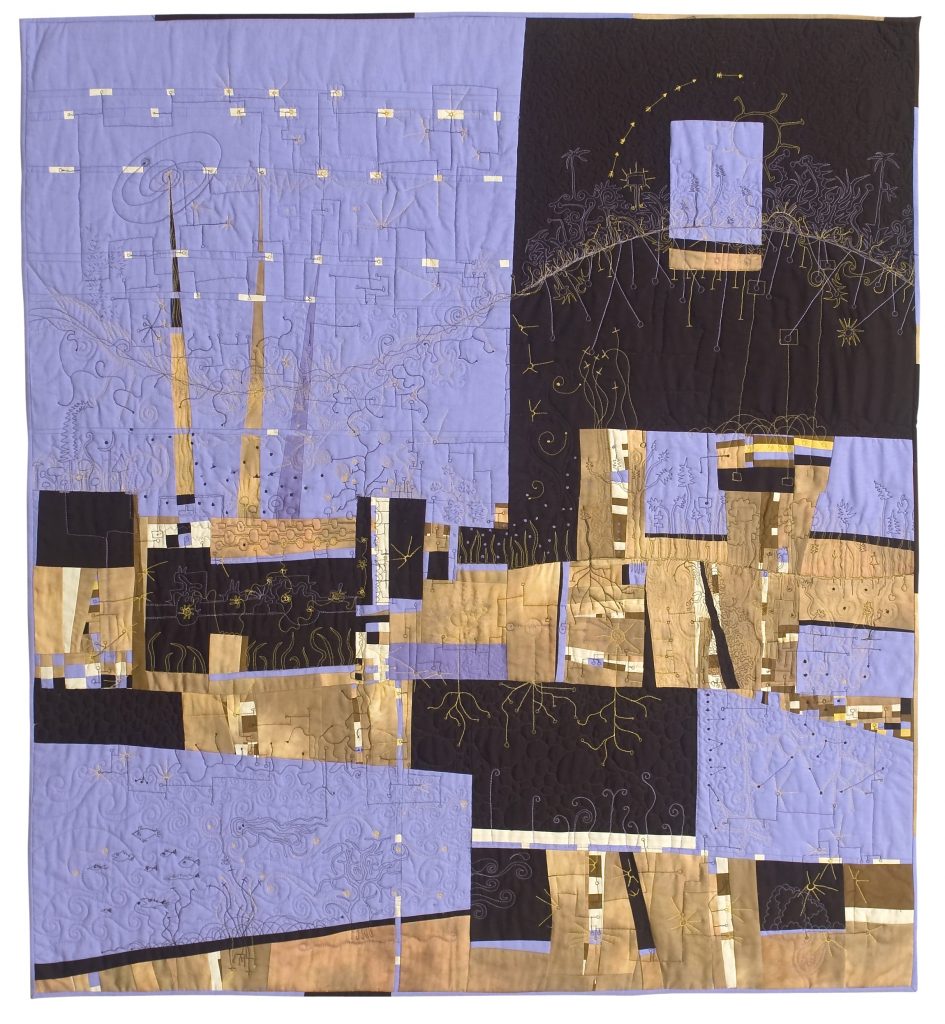 City, 41.5” x 38”. 2008.
City, 41.5” x 38”. 2008.
City, one of the first pieces I made that was accepted into Quilt National.
AHA! Moments, a piece that started with a doodle drawing that was enlarged and stitched over. It’s all about how our brain connects points of data.
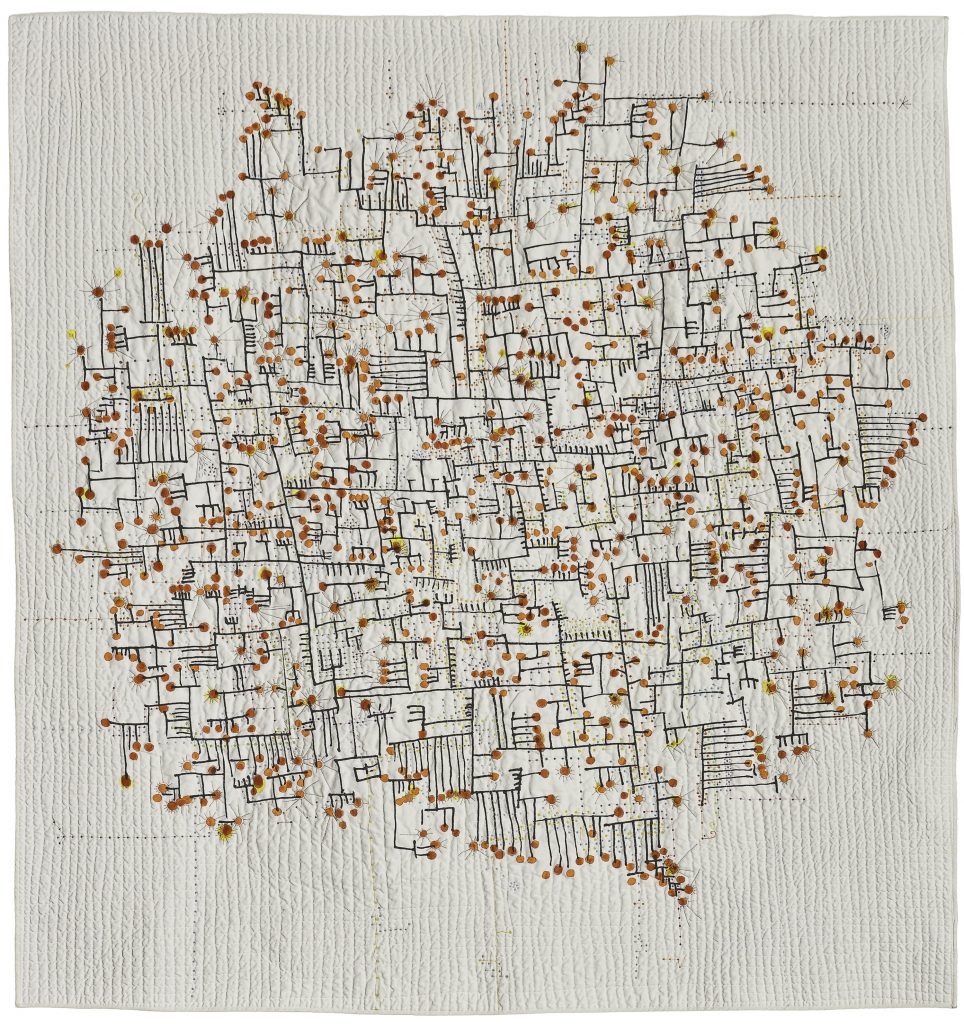 AHA! Moments, 57” x 54” 2010.
AHA! Moments, 57” x 54” 2010.
Round and Round It Goes, a piece that focuses on all the threats in the world from roaches to terrorists.
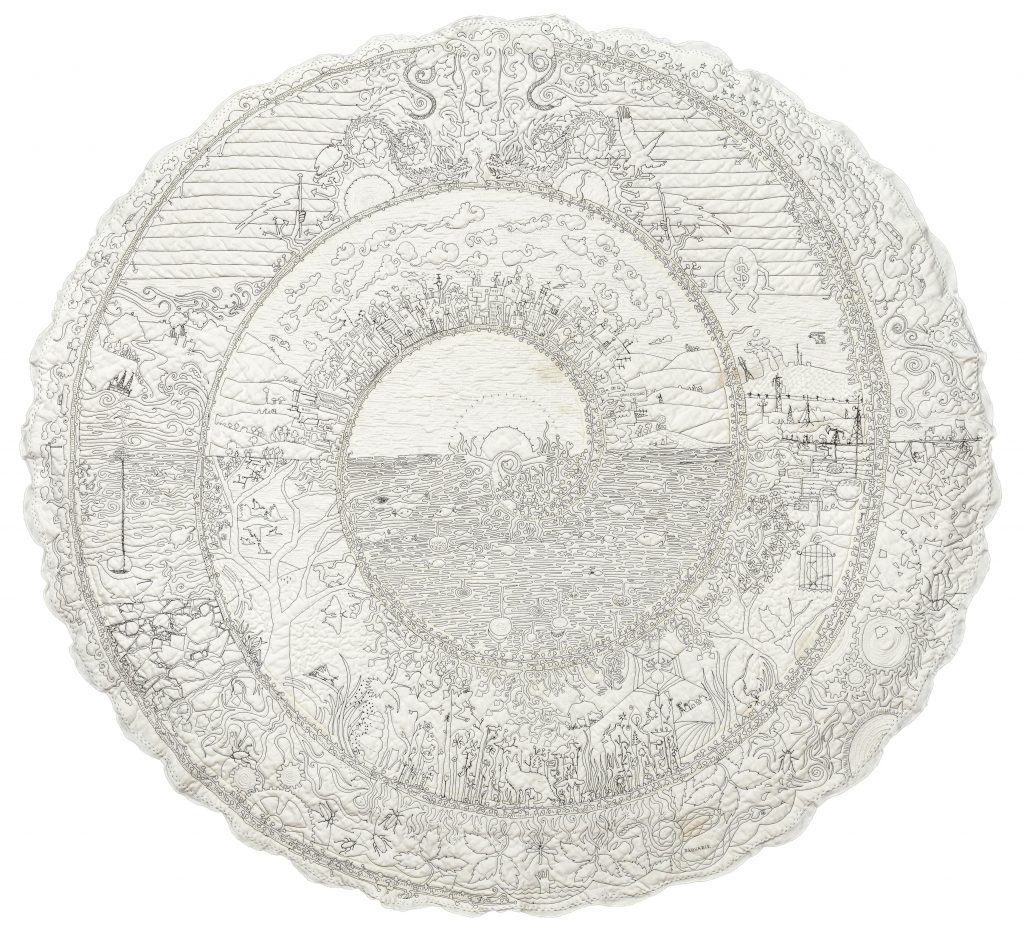 Round and Round It Goes, 54” diameter. 2013
Round and Round It Goes, 54” diameter. 2013
Chaos Ensues, a collage piece that brings diverse pieces of fabric together to tell a story of chaos. 32” x 32”, 2017
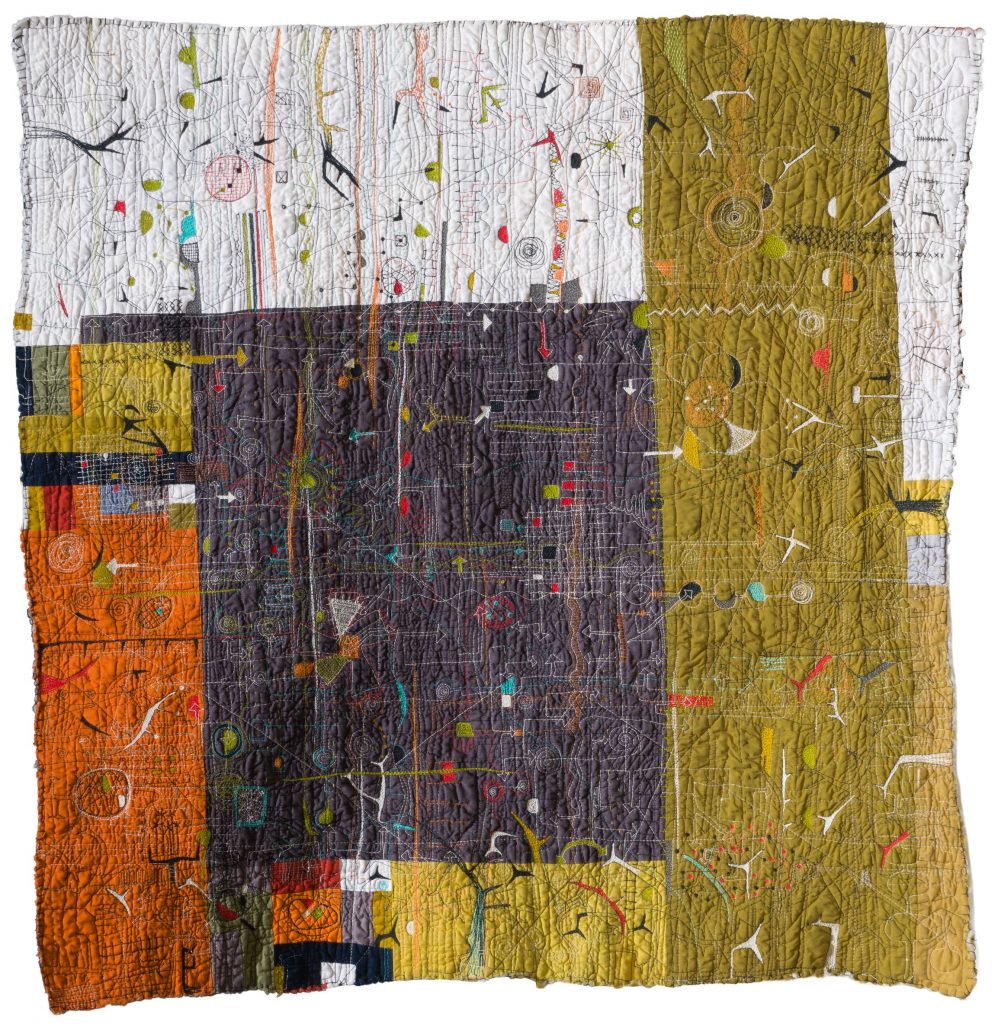 Chaos Ensues, 32” x 32”, 2017
Chaos Ensues, 32” x 32”, 2017
My current work.
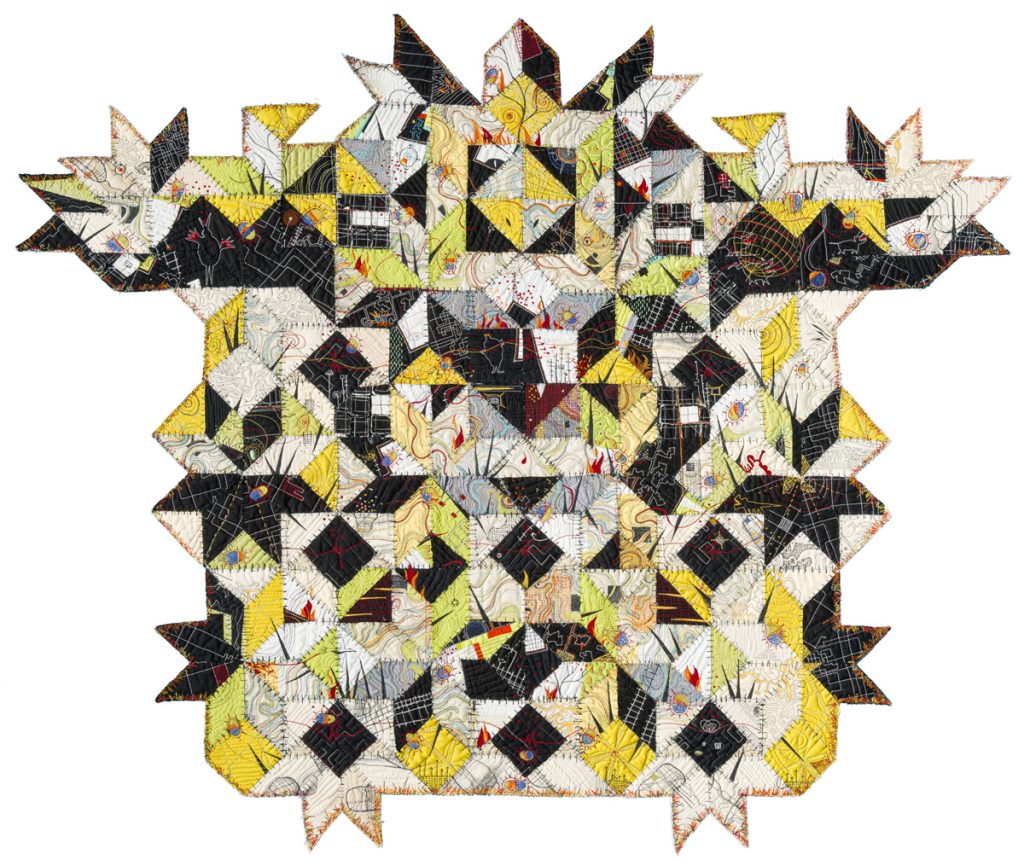 Dark Heart, 46” x 55”. 2019.
Dark Heart, 46” x 55”. 2019.
Dark Heart, A piece that assembles pieces from other quilts to create a new being.
Comment on the way you use raw edges in your work.
I find that the more I work in this medium the messier I am getting. I love the raw quality of edges with threads hanging. Layered stitching adds depth and dimension. Piling on layers adds a textural element that is difficult to show in other 2D mediums.
Discuss the work ‘Insomnia’.
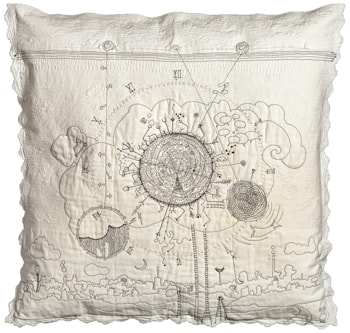
Insomnia was inspired by the world-wide economic collapse we all experienced in 2008. My business had suffered the loss of clients, I was worried about our savings and retirement and life was just a barrel of anxiety. All those thoughts went into these two pillow forms.
Size – How do you decide on the size of each quilt?
The quilts themselves determine their size. I build from bits and they grow to their mature size.
Backing – The backing of a quilt is an important part of each quilt. Comment on your thoughts on this aspect of quilting artistically.
I have many quilts that are two-sided because of the way the backing shows a different version of the stitching on the front. Since my stitching is so idiosyncratic, I often find new thoughts when I turn the quilt to the back.
Your mother passed on many craft skills to you. How do you see education filling these gaps currently.
I study art daily. I seek out artist talks, exhibits and critiques. But education also fills in another very important aspect of my practice. I read voraciously: science, politics, novels, poetry, botany, history, and commentary. These readings add bulk to my understanding of the world and find harbor in my work.
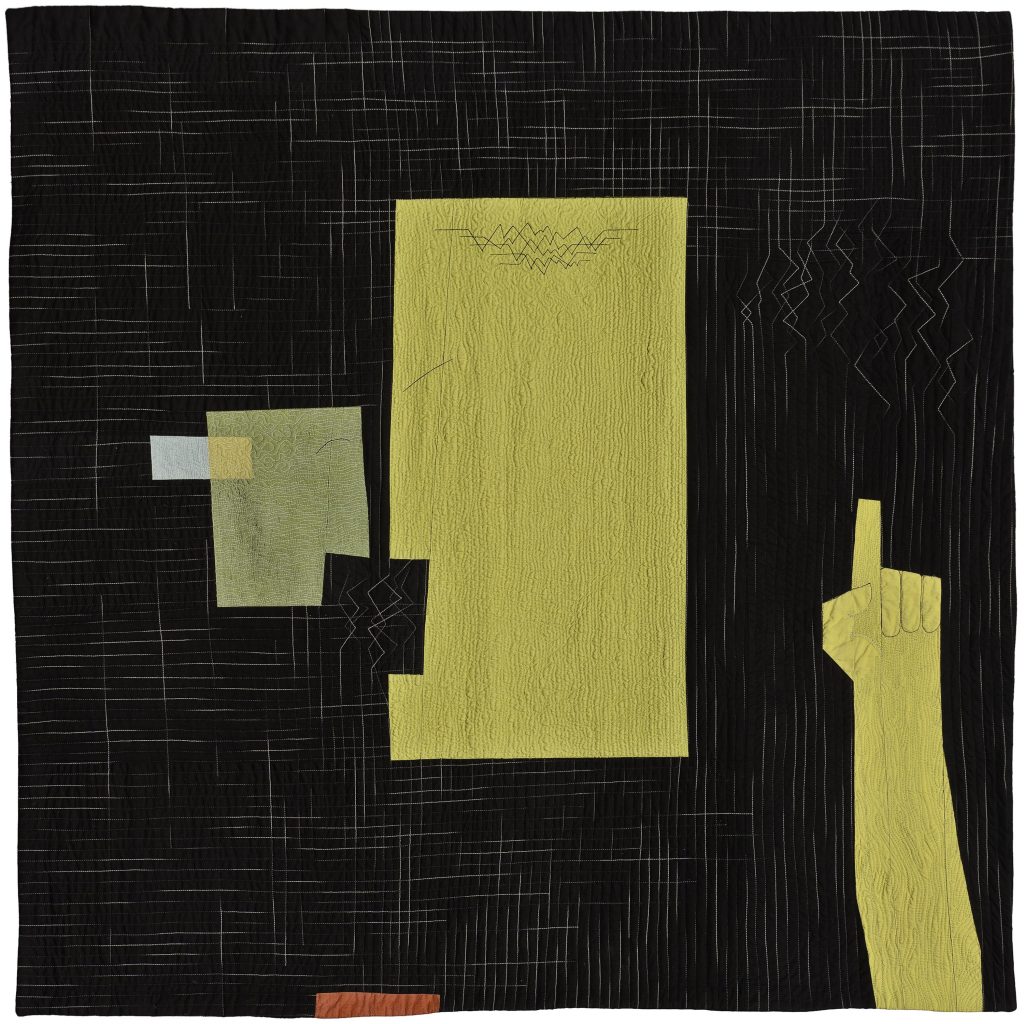 Pundit, 41.5 x 41.5”
Pundit, 41.5 x 41.5”
Take ‘Fallout’ and discuss the use of stains in this work.
Fallout is about nuclear testing. I wanted the work to look like an antique map. I used a vintage tablecloth as my substrate. I stitched the continents and oceans with blue and brown threads. Hand stitching added texture to the continents. Then I used tea to stain the piece to add depth. The dark brown spots made with dye represent areas on the earth where nuclear testing has been executed.
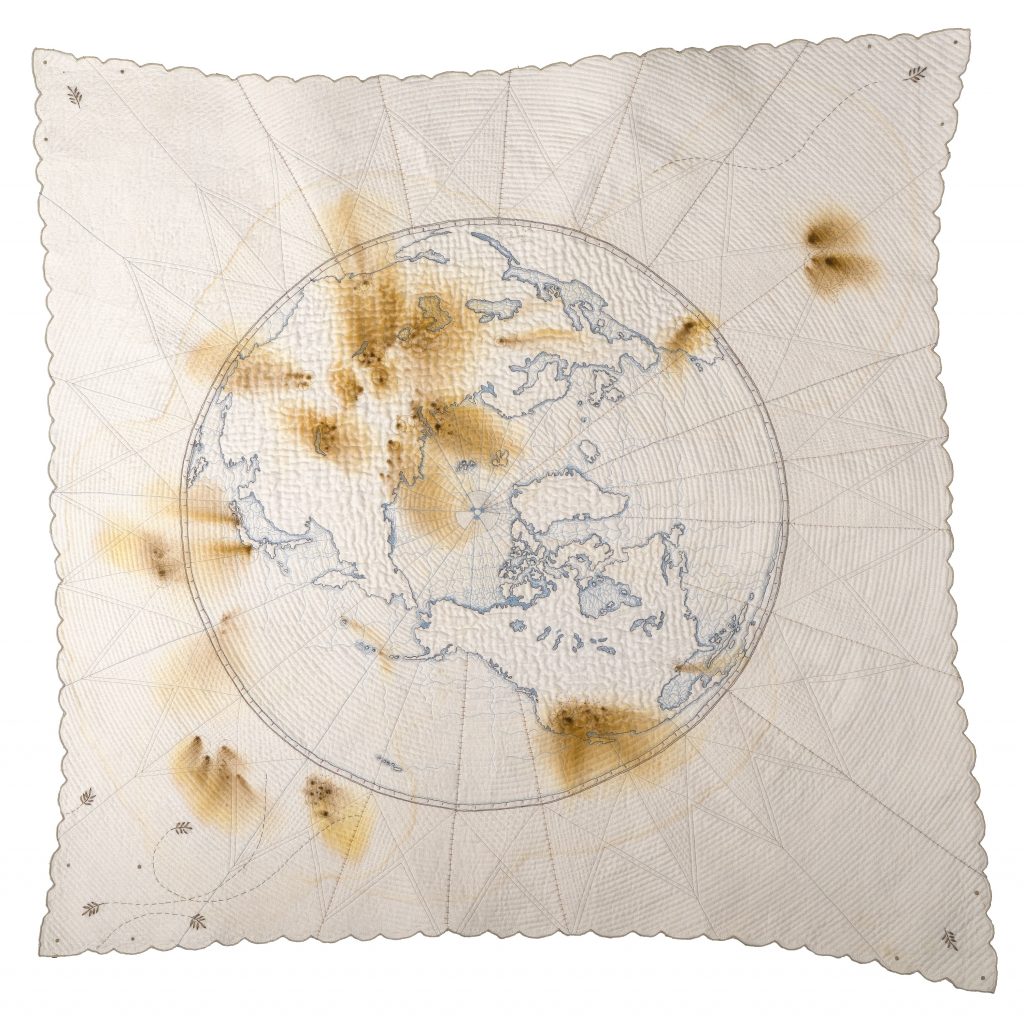
Fallout, 41.5” x 41.5” , 2017
Titles of works always have deep meanings can you take three quilts and discuss their title and why?
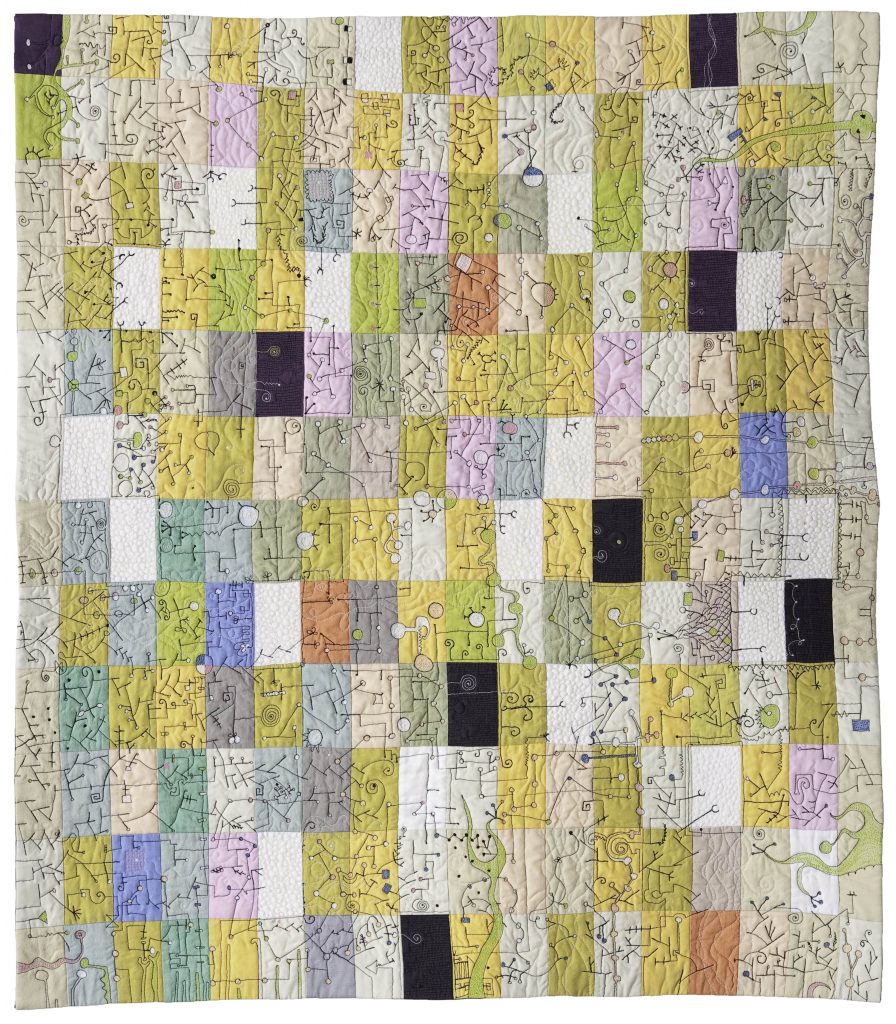 Connecting Fantasy to Reality Proved Difficult 39” x 34”, 2010
Connecting Fantasy to Reality Proved Difficult 39” x 34”, 2010
This is an early piece that was traditionally pieced but then stitched in a fantastical way. The contrast is striking.
Same But Not: This piece shows the trajectory and journey of two threads, one black and one white. It is a dialog about race and separation. 39.5”x 42”, 2011
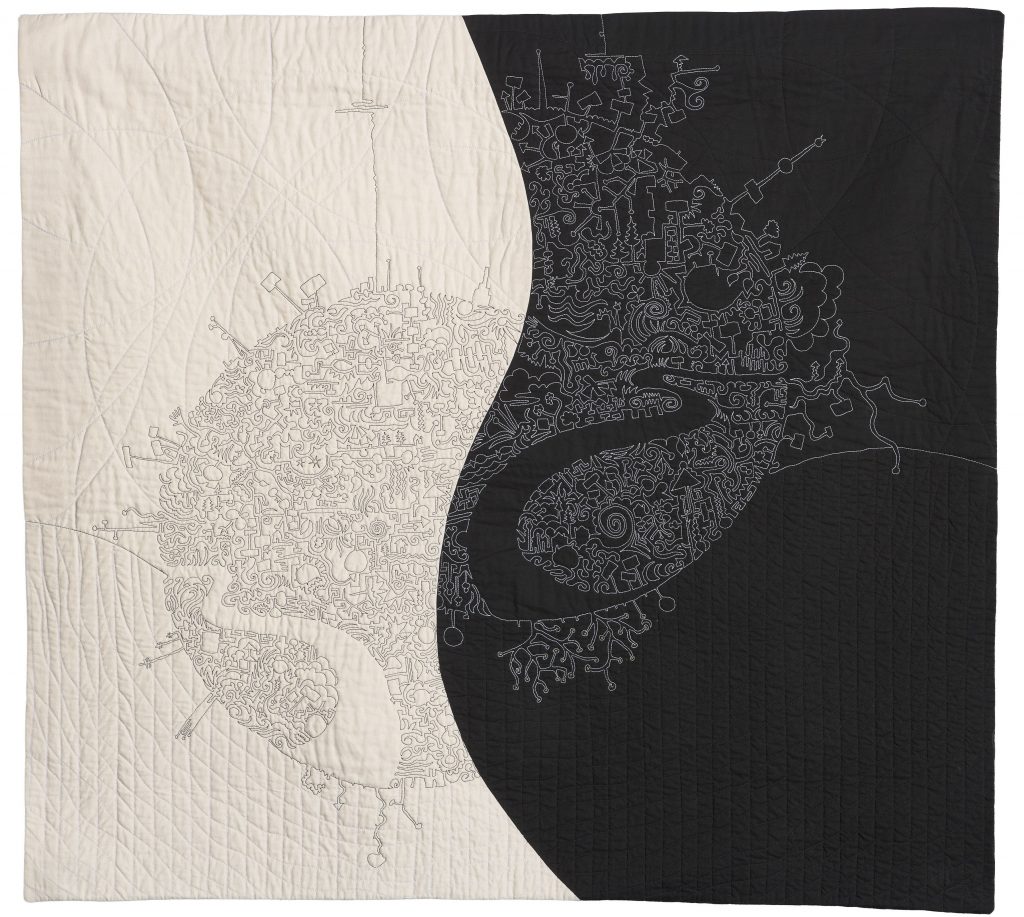 Same But Not, 39.5”x 42”, 2011
Same But Not, 39.5”x 42”, 2011
The Usual Suspects: Presto-Chango, Caught Red-Handed, Empty Rhetoric and Sideshow is about the clown show that happens in politics these days.
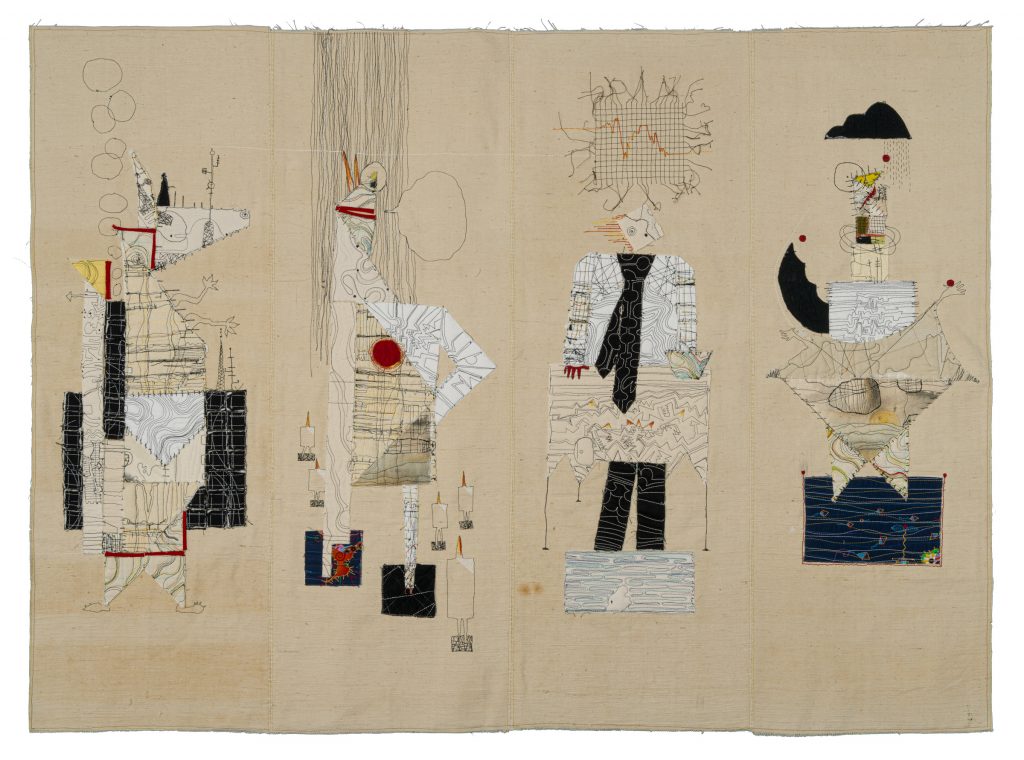 The Usual Suspects, 40” x 54”, 2019.
The Usual Suspects, 40” x 54”, 2019.
Contact:
Paula Kovarik
paulakovarik.com
IG: @yellowbrickstudio
Deborah Blakeley, Melbourne, Australia
Interview by Deborah Blakeley, February 2020
Think a colleague or friend could benefit from this interview?
Knowledge is one of the biggest assets in any business. So why not forward this on to your friends and colleagues so they too can start taking advantage of the insightful information the artist has given?
Other artists you may be interested in:


